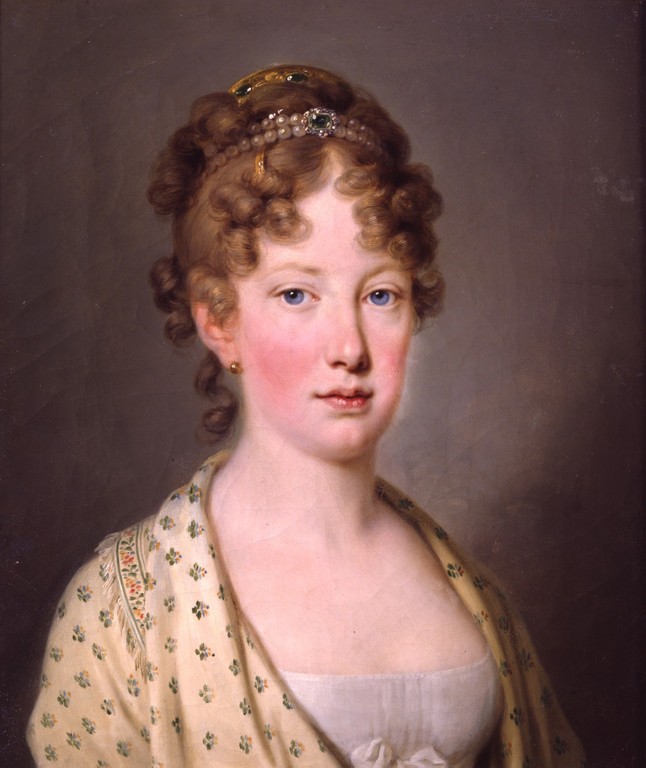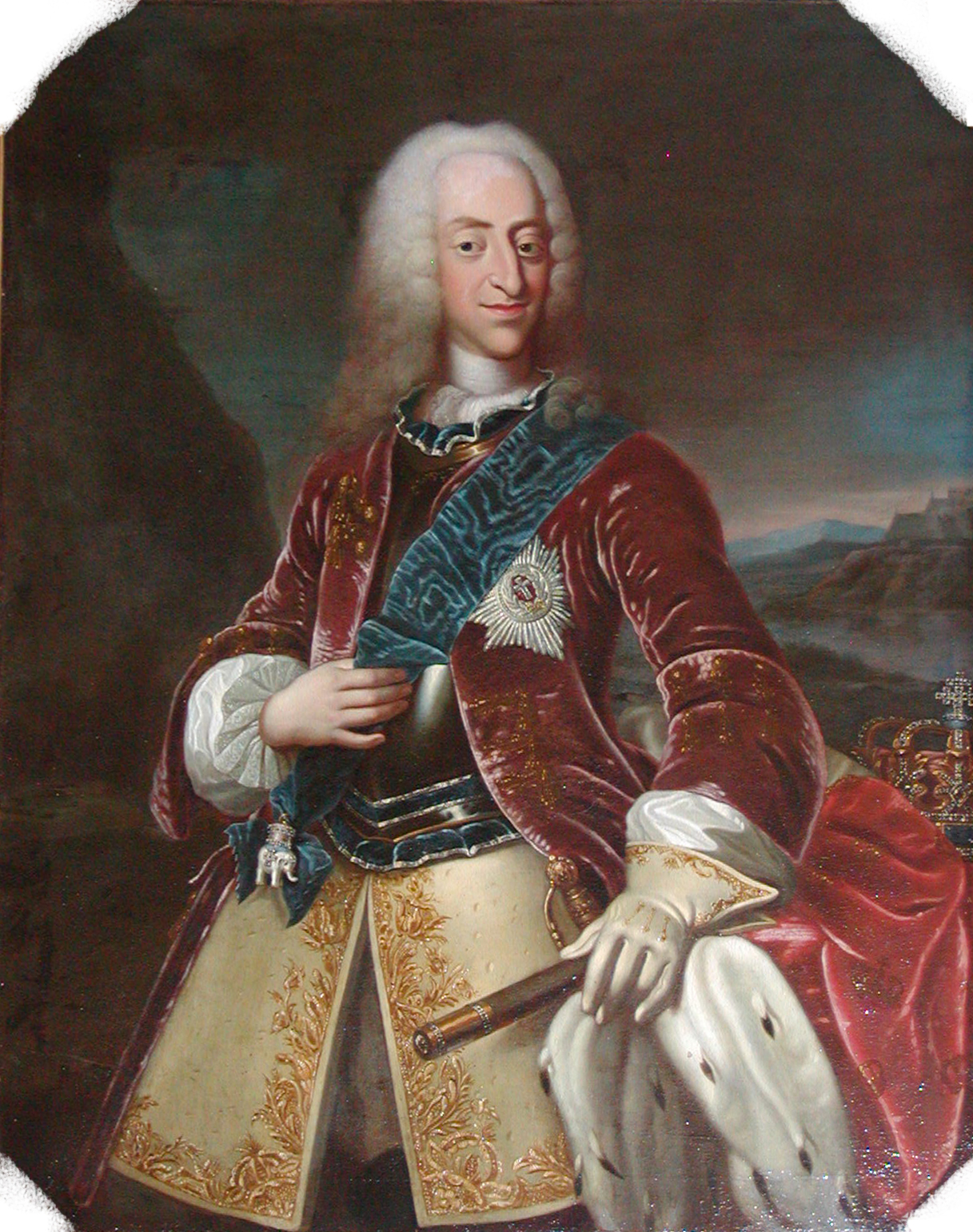© Unofficial Royalty 2024

Princess Louise of the United Kingdom, Duchess of Argyll; Credit – Wikipedia
December 3, 1764 – Birth of Augusta of Brunswick-Wolfenbüttel, Princess Friedrich of Württemberg, first wife of the future King Friedrich I of Württemberg, in Brunswick, Duchy of Brunswick-Wolfenbüttel, now in Lower Saxony, Germany
Full name: Augusta Caroline Friederike Luise
Augusta was the daughter of Karl Wilhelm Ferdinand, Duke of Brunswick-Wolfenbüttel and Princess Augusta of Great Britain, a sister of King George III. In 1780, Augusta married Prince Friedrich of Württemberg, later King Friedrich I of Württemberg. Despite a very unhappy marriage, Augusta and Friedrich had four children. Augusta wanted to leave her husband as early as her first pregnancy. In 1782, Friedrich had impressed Catherine II (the Great), Empress of All Russia while visiting Russia, and she made him Governor-General of Eastern Finland. Four years later, while they were visiting Catherine II in St. Petersburg, Augusta asked Catherine for protection from her husband. She claimed that Friedrich was abusive to her, and was having affairs with several men. Catherine took Augusta in and told Friedrich to leave the country. Augusta hoped to obtain a divorce, but her father would not permit it. So Catherine provided Augusta with a home at Koluvere Castle in Estonia, along with a custodian, Wilhelm von Pohlmann. Soon, Augusta and von Pohlmann began an affair and she became pregnant. On September 27, 1788, Augusta went into premature labor. Fearing that their affair would become known, von Pohlmann refused to call for a doctor and Augusta died of blood loss.
Unofficial Royalty: Augusta of Brunswick-Wolfenbüttel
December 3, 1821 – Birth of Jane Loftus, Marchioness of Ely, Lady of the Bedchamber to Queen Victoria
Born Jane Hope-Vere, the daughter of James Hope-Vere and Lady Elizabeth Hay, a daughter of the 7th Marquess of Tweeddale. She married John Loftus, 3rd Marquess of Ely. She was a Lady of the Bedchamber to Queen Victoria from 1851 until 1889. She then served as an Extra Lady of the Bedchamber until she died in 1890.
Unofficial Royalty: Jane Loftus, Marchioness of Ely
December 3, 1838 – Birth of Luise of Prussia, Grand Duchess of Baden, wife of Grand Duke Friedrich I of Baden, in Berlin, Kingdom of Prussia, now in Brandenburg, Germany
Full name: Luise Marie Elisabeth
Luise was the daughter of Wilhelm I, King of Prussia and Augusta of Saxe-Weimar-Eisenach. She had one older brother Friedrich III, German Emperor and King of Prussia. In 1856, Luise married the future Grand Duke Friedrich I of Baden. The couple had three children including Friedrich II, Grand Duke of Baden and Victoria who married King Gustav V of Sweden. Luise became involved in charitable causes in Baden, particularly those that helped and promoted women. Luise’s husband died in 1907. At the end of World War I, Luise along with her daughter Queen Victoria of Sweden, who was visiting, fled to Zwingenberg Palace in Zwingenberg, now in the German state of Baden-Württemberg. The new Baden government then granted Luise permission to stay at Langenstein Castle, owned by the Swedish Count Douglas, who was related to the Baden Grand Ducal family through marriage. The Baden government ordered that Luise and her family be protected, primarily because her daughter was Queen of Sweden, and they did not want to cause any diplomatic problems. In 1919, Luise was given permission to return to Neues Schloss (New Castle) in Baden-Baden, Baden-Württemberg, Germany where she died at the age of 85.
Unofficial Royalty: Louise of Prussia, Grand Duchess of Baden
December 3, 1839 – Death of King Frederik VI of Denmark and Norway at Amalienborg Palace in Copenhagen, Denmark; buried at Roskilde Cathedral in Roskilde, Denmark
Frederik VI was the only son and the eldest of the two children of King Christian VII of Denmark and Norway and his and Caroline Matilda of Wales, sister of King George III of the United Kingdom. Frederik’s father King Christian VII suffered from mental illness. His ill-treated mother Caroline Matilda had an affair with physician Johann Friedrich Struensee. After the affair was discovered Struenss was executed and Caroline Matilda was imprisoned in a castle and never saw her children again. In 1790, Frederik married his cousin Princess Marie of Hesse-Kassel. Frederik and Marie had eight children but unfortunately, six of them, including two boys, died in infancy. Only two daughters survived and both daughters had childless marriages. In 1808, 1808, Frederik became king upon the death of his father. After the French defeat in the Napoleonic Wars in 1814 and the loss of Norway, Frederik became more authoritarian and reactionary, giving up his former liberal ideas. He died at the age of 71.
Unofficial Royalty: King Frederik VI of Denmark and Norway
December 3, 1882 – Death of Bernhard II, Duke of Saxe-Meiningen in Meiningen, Duchy of Saxe-Meinigen, now in Thuringia, Germany; buried in the Ducal Crypt Chapel in the Meiningen municipal cemetery until 1977, when his remains were removed from the chapel, cremated and buried elsewhere in the cemetery
Bernhard was the only son of Georg I, Duke of Saxe-Meiningen and the younger brother of Adelaide of Saxe-Meiningen who married King William IV of the United Kingdom. In 1803, three-year-old Bernhard became Duke of Saxe-Meiningen upon the death of his father. In 1825, Bernhard married Princess Marie Friederike of Hesse-Kassel and the couple had two children. Although he had earlier aligned himself with Prussia, in the mid-1860s, Bernhard instead sided with Austria during the Austro-Prussian War of 1866. Following Austria’s defeat, the Prussians forced Bernhard to abdicate on September 20, 1866, in favor of his son, Georg II. Now the former Duke, Bernhard took up residence at the Great Palace in Meiningen, previously built as a dower home for his mother. He died there at the age of 81.
Unofficial Royalty: Bernhard II, Duke of Saxe-Meiningen
December 3, 1935 – Death of Princess Victoria of the United Kingdom, daughter of King Edward VII of the United Kingdom, at her home Coppins in Iver, Buckinghamshire, England; buried at the Royal Burial Ground, Frogmore in Windsor, England
Victoria’s mother Alexandra was extremely possessive, demanded complete devotion from her children, and insisted that they call her Motherdear. Victoria’s sisters Louise and Maud escaped into marriage, leaving her at home as her mother’s constant companion. She had several suitors including Prince Adolphus of Teck, Sir Arthur Davidson, one of her father’s equerries, and Archibald Primrose, 5th Earl of Rosebery. Lord Rosebery was a former Prime Minister who had been widowed, and both he and Victoria would have liked to have married. However, Victoria’s mother actively discouraged her from marrying anyone. Instead, she remained a companion to her mother, Queen Alexandra, whom she lived with until the Queen died in 1925. Grand Duchess Olga Alexandrovna, Victoria’s first cousin, described her as little more than “a glorified maid.” When her mother died, Victoria was 57 and was able to live her own life at last. She purchased a country home, Coppins, in Iver, Buckinghamshire, England. Victoria became active in the village life of Iver and was the honorary president of the Iver Horticultural Society. Victoria’s last years were plagued with health issues and she suffered from neuralgia, migraines, indigestion, depression, colds, and influenza. Princess Victoria died at her home Coppins at the age of 67.
Unofficial Royalty: Princess Victoria of the United Kingdom
December 3, 1939 – Death of Princess Louise of the United Kingdom, Duchess of Argyll, daughter of Queen Victoria, at Kensington Palace in London, England; cremated and ashes buried at the Royal Burial Ground, Frogmore in Windsor, England
Louise developed a strong interest in the arts. Queen Victoria permitted her to enroll at The National Art Training School to pursue her interests and she became a very skilled painter and sculptress. She sculpted a statue of Queen Victoria which stands today on the grounds of Kensington Palace. In 1871, Louise married John Campbell, Marquess of Lorne and heir to the Dukedom of Argyll. Queen Victoria found this to be a wonderful match, infusing ‘new blood’ into the royal family. Others, including the Prince of Wales, found it appalling that the Princess should marry below her class. Louise and her husband had no children. From 1878 – 1883, Louise’s husband was the Governor-General of Canada and the couple resided at Rideau Hall in Ottawa. Louise was widowed in 1914 when her husband passed away after a lengthy illness. She would survive him by more than 25 years. During this time, she remained an active member of the royal family, taking part in official events and maintaining contact with many of her patronages and charities. Louise spent her remaining years at Kensington Palace, where she died at the age of 91.
Unofficial Royalty: Princess Louise, Duchess of Argyll
December 3, 1944 – Death of Prince Andreas (Andrew) of Greece, son of King George I of Greece and father of Prince Philip, Duke of Edinburgh, at the Metropole Hotel in Monte Carlo, Monaco; first buried at the Russian Orthodox Church in Nice, France; in 1946, his remains were reinterred in the royal cemetery at Tatoi Palace in Greece
The father of Prince Philip, Duke of Edinburgh, Andreas was the son of King George I of Greece (born a Prince of Denmark) and Grand Duchess Olga Konstantinovna of Russia. In 1903, he married Princess Alice of Battenberg, daughter of Prince Louis of Battenberg and Princess Victoria of Hesse and by Rhine. The couple had four daughters and one son. Andreas’ life was often interrupted by the political turmoil in Greece. By the early 1930s, Andreas had less and less contact with his family. His wife suffered a nervous breakdown and was institutionalized, his four daughters had all married into former German royal families, and his son was attending school first in Germany and then in the United Kingdom. Somewhat at a loss, having been basically forced into a life of retirement, Andreas moved to the French Riviera. The onset of World War II brought an end to the little contact Andreas had with his wife and children. His wife had returned to Greece, his daughters were all behind German lines, and his son was fighting for the British forces. Prince Andreas died at the Metropole Hotel in Monte Carlo on December 3, 1944, at the age of 62.
Unofficial Royalty: Prince Andreas of Greece
December 3, 2005 – Birth of Prince Sverre Magnus of Norway, son of Crown Prince Haakon of Norway, at the Rikshospitalet University Hospital in Oslo, Norway
Sverre Magnus is the youngest of the two children of Crown Prince Haakon of Norway and his wife Crown Princess Mette-Marit (née Mette-Marit Tjessem Høiby), and one of the five grandchildren of King Harald V of Norway. The prince is third in the line of succession to the Norwegian throne, behind his father and sister Princess Ingrid Alexandra.
Unofficial Royalty: Prince Sverre Magnus of Norway
This article is the intellectual property of Unofficial Royalty and is NOT TO BE COPIED, EDITED, OR POSTED IN ANY FORM ON ANOTHER WEBSITE under any circumstances. It is permissible to use a link that directs to Unofficial Royalty.













